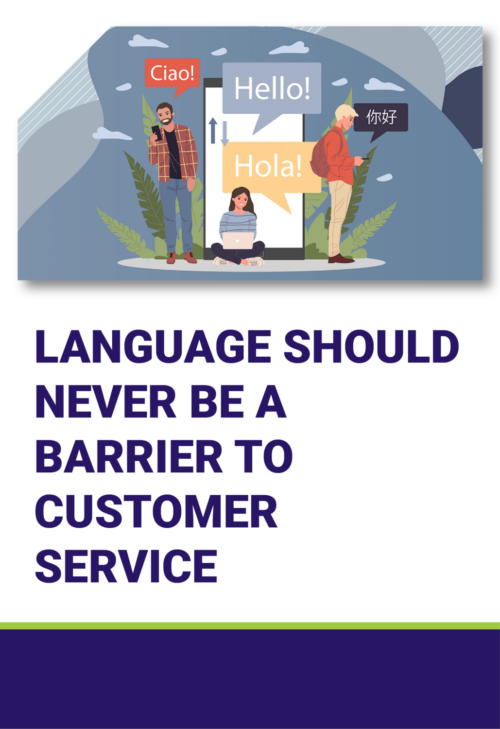While English is the most widely used language in the United States, according to the U.S. Census Bureau, some of the most widely spoken languages other than English are Spanish, Chinese, Tagalog, Vietnamese, and Arabic. More specifically, over 41 million Americans speak Spanish or Spanish Creole, over 3 million speak Chinese, and over 1 million each speak Tagalog, Vietnamese, and Arabic, making it very important for your contact center to have ways for customers to interact with your business. At the very least, Spanish and Chinese should be considerations beyond English.
This might seem daunting if most of your staff only speak English. Thankfully, there are several ways that companies can bridge the language gap and assist customers who speak different languages. Here are some prominent ones:
Translation tools and APIs
Integrate tools like Google Translate, Amazon Translate, or DeepL into your website, app, or chatbots to offer real-time translation for customer inquiries and content.
Multi-lingual Chatbots: These AI-powered virtual assistants can answer basic questions, offer support, and collect information in different languages, reducing pressure on human agents.
Live Chat Translation: Provide real-time translation during live chat sessions with human agents, ensuring smooth communication without language barriers.
Multi-lingual Voice Assistants: Integrate voice assistants like Siri or Google Assistant to understand and respond to customer queries in their preferred language.
Translation Management Systems (TMS)
Manage and streamline multi-lingual content creation, including website content, help articles, and marketing materials. This way those looking for content/answers on their own can easily access it through your portals.
Multi-lingual Contact Centers
Employ customer service agents fluent in various languages to directly assist customers through phone calls, video conferencing, or live chat.
On-demand Interpretation Services
Multi-lingual agents come with a higher price, so if multiple languages aren’t a common issue, you might look into hiring a smaller number of interpreters or an interpretation service. These partnerships provide live translation support for specific interactions or complex situations.
Cultural Sensitivity
Sometimes it’s not enough to just know/translate the language. Consider training customer service representatives on cultural awareness to offer respectful and appropriate communication in other languages.
Remember, the best approach often involves combining different technologies and human expertise to create a seamless and supportive experience for all customers, regardless of their language. Would you like to learn more on how to implement services like these? Contact us here.

